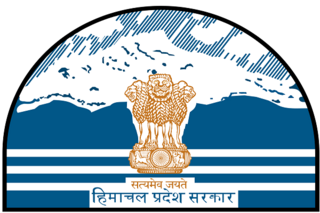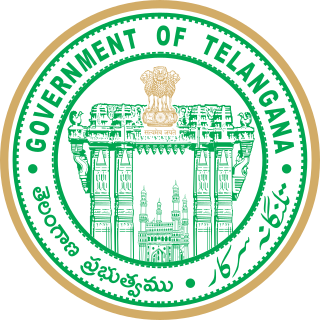
A Member of the Legislative Assembly (MLA) is a representative elected by the voters of an electoral district (constituency) to the legislature of State government in the Indian system of government. From each constituency, the people elect one representative who then becomes a member of the Legislative Assembly (MLA). Each state has between seven and nine MLAs for every Member of Parliament (MP) that it has in the Lok Sabha, the lower house of India's bicameral parliament. There are also members in three unicameral legislatures in Union Territories: the Delhi Legislative Assembly, Jammu and Kashmir Legislative Assembly and the Puducherry Legislative Assembly. Only a Member of the Legislative Assembly can work as a minister for more than 6 months. If a non-Member of the Legislative Assembly becomes a Chief Minister or a minister, he must become an MLA within 6 months to continue in the job. Only a Member of the Legislative Assembly can become the Speaker of the Legislature
A member of the Legislative Assembly (MLA) is a representative elected to sit in a legislative assembly. Most often, the term refers the legislature of a federated state or autonomous region, but is also the name of several national legislatures.
In India, a governor is the constitutional head of a state of India that has similar powers and functions at the state level as those of the president of India at the central level. Governors exist in the states, while lieutenant governors and administrators exist in union territories of Delhi and Puducherry and other union territories. A governor acts as the constitutional head and takes all their decisions based on the advice of chief minister and their council of ministers.

The Puducherry Legislative Assembly is the unicameral legislature of the Indian union territory (UT) of Puducherry, which comprises four districts: Puducherry, Karaikal, Mahé and Yanam. Out of eight union territories of India, only three have legislatures and they are Delhi, Puducherry and Jammu and Kashmir. After delimitation shortly after its formation, the Puducherry legislative assembly has 33 seats, of which 5 are reserved for candidates from scheduled castes and 3 members are nominated by the Government of India. 30 out of 33 Members are elected directly by the people on the basis of universal adult franchise and the remaining three are nominated by the central government. These nominated members enjoy same powers as elected members of the assembly.

The Government of Himachal Pradesh also known as the State Government of Himachal Pradesh, or locally as State Government, is the supreme governing authority of the Indian state of Himachal Pradesh. It consists of an executive branch, led by the Governor of Himachal Pradesh, a judiciary and a legislative branch.

The Government of Kerala, also known as the Kerala Government, is the administrative body responsible for governing Indian state of Kerala. The government is led by a chief minister, who selects all the other ministers. The chief minister and their most senior ministers belong to the supreme decision-making committee, known as the cabinet.

The Government of Bihar or Bihar Government is the state government of the Indian state of Bihar and its nine divisions which consist of 38 districts. It consists of an executive, led by the Governor of Bihar, a judiciary and legislative branches.
The Government of Punjab, India, also known as the State Government of Punjab or locally as the State Government, is the supreme governing authority of the Indian state of Punjab and its 23 districts. It consists of an executive, led by the Governor of Punjab, a judiciary and a legislative branch.
State governments in India are the governments ruling over 28 states and 8 union territories of India and the head of the Council of Ministers in a state is the Chief Minister. Power is divided between the Union government and state governments. While the Union government handles defence, external affairs etc., the state government deals with internal security and other state issues. Income for the Union government is from customs duty, excise tax, income tax etc., while state government income comes from sales tax (VAT), stamp duty etc.; now these have been subsumed under the various components of the Goods and Services Tax

The Government of Telangana also known as TelanganaGovernment, is the governing authority of the state of Telangana in India. It consists of an executive, a judiciary and a legislative.
Puducherry has a parliamentary system as defined by its constitution, with power distributed between the union territory government and the districts.

The Second Assembly of PondicherryDeuxième Assemblée de Pondichéry succeeded the First Assembly of Pondicherry and was constituted after the victory of Indian National Congress (INC) and allies in the 1964 assembly election held on 23 August 1964. Venkatasubba Reddiar assumed office as 2nd Pondicherry. These were the first Legislative Assembly elections after the formation of the new Union Territory.

The Pondicherry Representative Assembly was converted into the Legislative Assembly on 1 July 1963 as per Section 54(3) of The Union Territories Act, 1963. All the 39 members who were elected by 1959 were deemed to have been elected to the First Assembly of PondicherryPremière Assemblée de Pondichéry.

The Second Representative Assembly of PondicherryDeuxième Assemblée Représentative de Pondichéry succeeded the First Representative Assembly of Pondicherry and was constituted after the victory of Indian National Congress (INC) and its ally in the 1959 assembly election held between 11 and 14 August 1959.

After the de facto merger on 1 November 1954 and before the legal integration with the Indian Union on 16 August 1962, general elections were held in 1955 and 1959. In January 1955, The Indian union government renamed the French settlements in India as State of Pondicherry by passing an order. The previous assembly that was elected during French rule was dissolved on 13 June 1955 and the first general elections to the Pondicherry Representative Assembly were held in next month from 18 to 23 July for 39 constituencies. The election were held on the basis of adult franchise under the State of Pondicherry Order, 1955 which prescribed the rules and regulations for the conduct of elections, more or less on the pattern adopted in the Indian Union.

The Fifteenth Assembly of Pondicherry succeeded the 14th Assembly of Pondicherry and was constituted after the victory of National Democratic Alliance in the 2021 assembly election that was held on April 6, 2021.
Elections to the Puducherry Legislative Assembly were held in October 1977, to elect members of the 30 constituencies in Puducherry, in India. The All India Anna Dravida Munnetra Kazhagam won the popular vote and the most seats, and S. Ramassamy was appointed as the Chief Minister of Puducherry for his second term.
Elections to the Puducherry Legislative Assembly were held in 1969, to elect members of the 30 constituencies in Puducherry, in India. The Indian National Congress won the popular vote and the most seats, and P. Shanmugam was appointed as the Chief Minister of Puducherry.










